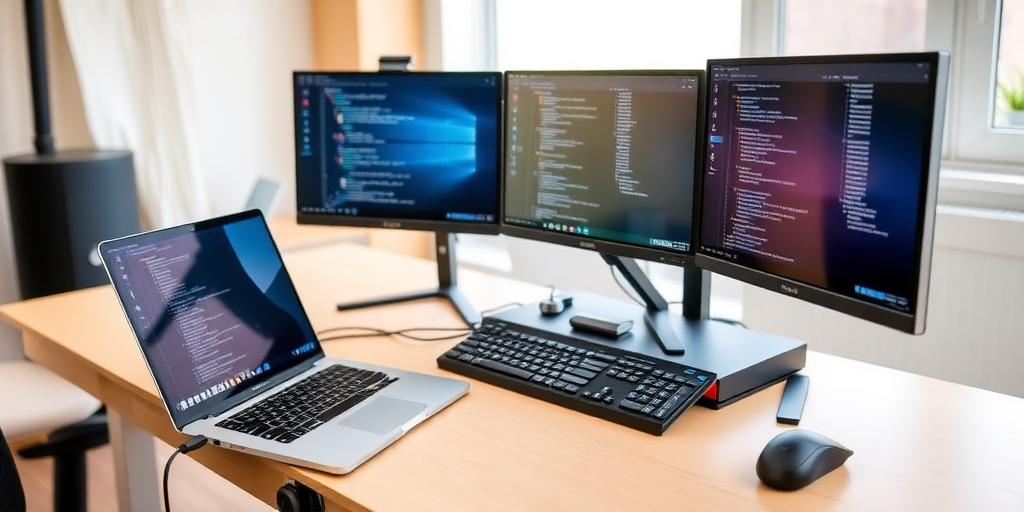In today's work-from-home (WFH) landscape, a reliable docking station is no longer a luxury but a necessity. It transforms your laptop into a versatile workstation, connecting multiple devices, displays, and peripherals with ease. This guide highlights the best docking stations for your WFH setup, ensuring productivity and efficiency.
What to Look for in a Docking Station
Before diving into specific recommendations, consider these key features:
- Connectivity: Ensure the docking station has enough ports for your needs, including USB-A, USB-C, HDMI, DisplayPort, Ethernet, and audio jacks.
- Power Delivery: Check the power delivery capability (in watts) to ensure it can charge your laptop while connected.
- Display Support: Verify the number and resolution of external displays supported (e.g., dual 4K, single 5K).
- Compatibility: Confirm compatibility with your laptop's operating system (Windows, macOS, ChromeOS) and ports (Thunderbolt, USB-C).
- Form Factor: Decide between a desktop dock (larger, more ports) and a portable dock (compact, fewer ports).
Top Docking Stations for WFH
- CalDigit TS4 Thunderbolt 4 Dock: Ideal for Thunderbolt 4 laptops, offering 18 ports, 98W power delivery, and support for dual 4K displays at 60Hz.
- Anker PowerExpand 13-in-1 USB-C Dock: A versatile option with numerous ports, 85W power delivery, and support for triple displays (via DisplayLink).
- Dell WD19TB Thunderbolt Dock: Designed for Dell laptops but compatible with others, providing 130W power delivery and support for dual 4K displays.
- HP USB-C Dock G5: A solid choice for HP users, offering essential ports, 65W power delivery, and support for dual displays.
- Plugable USB 3.0 Universal Laptop Docking Station: A budget-friendly option for older laptops, offering USB 3.0 connectivity, multiple display outputs, and Ethernet.
Factors Influencing Your Choice
- Budget: Docking stations range from affordable to premium, so set a budget beforehand.
- Number of Devices: Consider all the devices you need to connect (monitors, keyboard, mouse, webcam, etc.).
- Portability: If you travel frequently, a portable dock might be more suitable.
Setting Up Your Docking Station
- Connect the Dock: Plug the docking station into a power outlet and connect it to your laptop via USB-C or Thunderbolt.
- Connect Peripherals: Attach your monitor(s), keyboard, mouse, and other devices to the docking station.
- Install Drivers: If necessary, install the required drivers for the docking station.
- Configure Displays: Adjust your display settings to extend or mirror your screen(s).
Conclusion
A quality docking station can significantly enhance your WFH experience by providing the connectivity and convenience needed for a productive workspace. Evaluate your specific needs and budget to choose the best docking station that fits your requirements.









